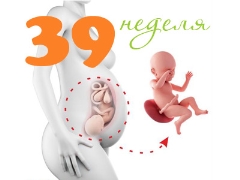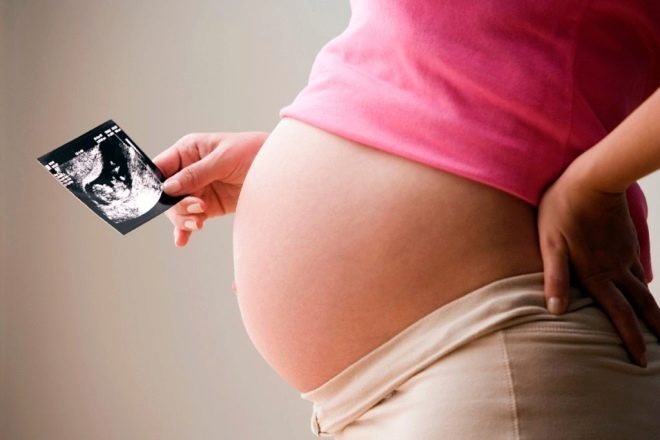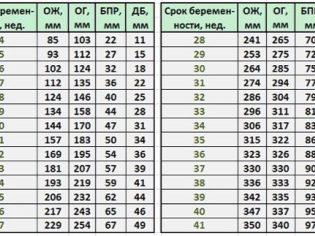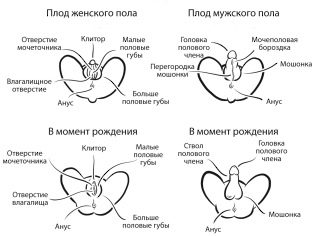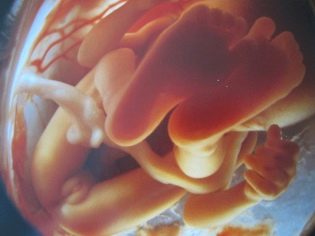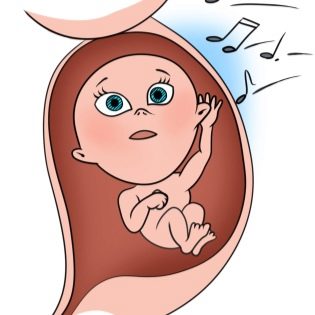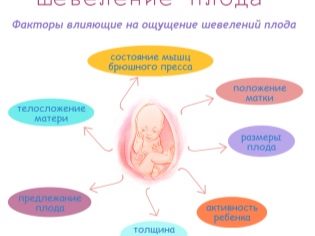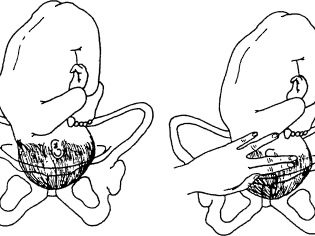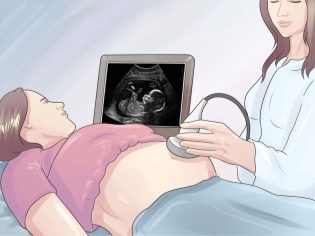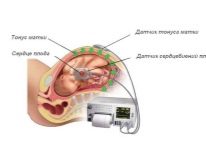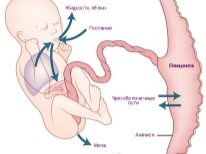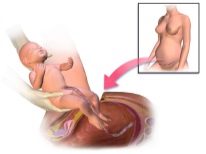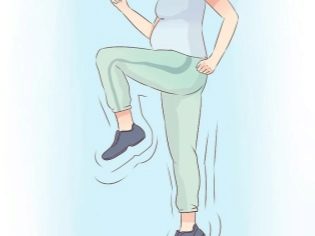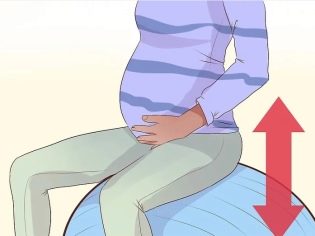Fetus at the 39th week of pregnancy: norms and characteristics
There is a 39 week gestation. The baby has become big, he, like his mother, is in need of change. This week he may well be born.
How the baby has become for 37 embryonic weeks (and this is 39 obstetric weeks), we will tell in this article.
Height and weight
Woman is already pregnant 8 months and three weeks. During this time, from a microscopic set of cells, the baby has become big and strong, ready for independent life outside the maternal abdomen. This week its height and weight are very individual and depend on hereditary factors. and how well the pregnancy proceeded all previous months.
The weight of the baby this week, in most cases, overcame the psychological mark of 3 kilograms.
The minimum average value for this period is the estimated weight of 2900 grams, and a large child can weigh all 4 kilograms.
The more complete the nutrition of the pregnant woman, the easier the gestation period was, the more chances to give birth to the “hero”. Heredity also plays a great role - large mothers and fathers usually have large children, and thin parents of small stature “get” a crumb with less impressive parameters in the maternity hospital.
The growth of the crumbs at week 39 is more than 50 centimeters, but even here it does not do without individual genetic “corrections”.
If childbirth does not begin this week, the baby will grow up and gain some weight, but not more than 50-100 grams. The growth rate of the baby in the last weeks of pregnancy slows down.
Rules on fetometrii
Standards for fetometry, which are calculated by measurements on ultrasound, at this time no longer have such great diagnostic value as before, because now children have individual sizes.
They are more needed in order to predict the weight of the fetus and plan the tactics of childbirth.
On average, the rate of basic dimensions is:
- bipartial head size (BPR) - 94-95 mm (value from 86 to 102 mm is also considered normal);
- frontal head size (LZR) - 119 mm (also acceptable from 108 to 129 mm);
- thigh length (DBK) - 73-74 mm (fluctuations from 68 to 79 mm are not excluded);
- bone length (DKG) - 65-66 mm (normally can be from 61 to 71 mm);
- humerus length (WPC) - 64-65 mm (also valid from 60 to 70 mm);
- forearm bones length (DKP) - 56-57 mm (in normal size can vary from 51 to 60 mm);
- tummy circumference (Coolant) - 336-342 mm.
Appearance
The subcutaneous fat layer, which the baby "increased" throughout the third trimester of pregnancy, gives the crumbs at week 39 a special charm. The kid no longer looks skinny, all wrinkles and folds smoothed out, the skin has become a normal pink color, because the vascular grid and capillaries, which gave the child red and even purple hues, do not shine through the integuments.
Hair-fluff, covering the body of the child, is now missing. The skin became smooth and tender. The original white grease that covered the baby’s body earlier also disappeared.Only a small amount of it is preserved where it is needed now - in the folds on the arms and legs, neck and groin area, where, despite the aquatic environment in which the fruit is, mechanical rubbing is not excluded.
The head of the child may be covered with hair, or the baby may be completely bald with small blond and sparse hairs. This is also an individual trait.
The genitals are fully formed. In 9 out of 10 boys, the testicles have already descended into the scrotum, and in girls, the labia majora covers the small. Due to the action of the mother's sex hormones, the external genitals of babies may look somewhat swollen, like the nipples. But this phenomenon is temporary, after birth into the world during the first months everything will return to normal.
The development of organs and systems
A child at this time is considered fully mature. If the birth takes place in the coming days, the crumb is fully ready for life outside of her mother's womb.. His heart works smoothly and without failures, the heart rate (HR) is approximately 157 beats per minute.
The boys heartbeat is a little slower than girls. The lungs of the baby are ready for opening after the first breath. They accumulated enough for this concentration of the substance - surfactant, thanks to which the lungs will not stick together, and independent breathing will become possible.
The digestive organs have already completely “rehearsed” the interaction with each other.. The stomach can digest the amniotic waters trapped in it. Excess swallowed baby belches - so it turns out hiccups, which the mother feels like a uniform rhythmic pushes at one point in her stomach. Hiccups crumb often.
The inner walls of the intestine have sensitive lint, through which the absorption of nutrients will pass. Already in the intestines meconium has accumulated - the original feces of green color, with which the baby first “goes” into the toilet for the first time in the first days after birth.
The kidneys, the bladder, the urethra and the ureters work in full force. In the body the crumbs produce their own hormones and enzymes, the liver, spleen, pancreas, gall bladder are formed and act.
The fetal nervous system is still in its infancy.. And so it will continue after birth. Every day new neural connections appear, the brain “learns” to coordinate all processes in a small organism.
But even now the kid has achieved tremendous success - he already has over 70 reflex automatic movements that help a person survive.
The strongest are sucking, swallowing, breathing and grasping reflexes.
What does the baby feel?
The sense organs of the baby are developed quite well. He hears well - as far as the amniotic fluid, the thickness of the mother's abdominal wall and the noise inside it allow: heartbeat, the rumble of blood in the arteries, the "rumbling" of the intestine. But even such a soundtrack does not prevent the crumbs from recognizing my mother's voice, familiar sounds.
Many women notice that an active baby with a sudden alarm call or a door slamming dies down or, conversely, begins to "go on."
The eye of the baby is still “tuned”. Now he can distinguish between light and darkness; the intrauterine world is seen by him as a cluster of spots of varying color intensity and size. After birth, he will quickly learn to focus his eyes, and then to distinguish colors. The child does not feel the smell now, but perfectly captures the flavor nuances due to the developed taste buds on the tongue and the inner surface of the cheeks.
Stirrings
The baby becomes cramped and uncomfortable in the uterus. It occupies all the free space in it, so active movements of the fetus at week 39 are rarely observed. Most pregnant women at this time claim that the baby has become quiet, does not move much. However, the crumbs continue to retain a special, individual mode, in which periods of activity are replaced by periods of rest.
Some babies move strongly at night, others sleep at night with their mother and designate their presence in movements only during the day.. Many future mothers say that babies in the long term actively move in the morning and evening. Whatever the mode of activity, in 12 hours there should still be at least 10 motor episodes.
Against the background of a visible decrease in the activity of stirring, this week may begin to deliver unpleasant painful sensations to the expectant mother.
They are associated with the size of the fetus, as well as a decrease in the amount of amniotic fluid, quite natural at this time.
Previa
Most often, the kids at week 39 take the pose of athletes ready to start. Most of the children are located head down, this week it is pressed to the exit of the small pelvis. The fetus firmly presses the chin to the chest to facilitate its passage through the birth canal.
If at 39 weeks the baby’s location in the uterus is not the head one, then there is almost no chance that it will unfold properly for delivery, as well as free space for children's coups and maneuvers.
Pelvic presentation, in which the crumb to the small pelvis is located the booty, and also a rather rare transverse presentation, in which the baby lies across, are reasons for the appointment of a planned cesarean section. It is carried out this week or next.
Possible problems
Births This Week - frequent occurrence: about 40% of women give birth at the 39th week. An anomalous start may be a problem, for example, the leakage of amniotic fluid.
If there are watery liquid discharge, you should definitely visit the doctor unplanned. He will be able to determine whether the water is leaking, how much is left, how the child feels.
To establish the amount of fluid in the fetal bladder, measure the index of amniotic fluid on ultrasound, and to determine the status of the baby will make unscheduled CTG.
If a cardiotocography will show violations of the state of the fetus, tachycardia or bradycardia in the crumbs, an urgent delivery will be shown to the woman.
If the amount of water is still sufficient, the baby feels good, the woman is still hospitalized to watch around the clock, because the birth of her can begin as soon as possible.
Sometimes at week 39, pathological changes in the placenta are detected: it becomes too thin, ages too rapidly, ceases to provide the child with nutrition and oxygen. In this case, delivery is also indicated by stimulation of labor or by cesarean section.
Tips for the future mom
- To speed up the birth of the baby, if the mother is very tired, can moderate exercise, walking, sex with her husband, if the mucus plug has not yet departed, and there are no other contraindications to intimate pleasures. However, doctors do not advise to accelerate anything, because the kid knows better when it comes time for him to gather in our world.
- Some mindless folk ways to cause childbirth - such as drinking alcohol or a large dose of laxative can cause serious harm to the baby.
- If the baby in the 39th week is strongly pushed, it gives the mother pain, you should definitely visit a doctor to rule out the initial symptoms of hypoxia. If he calms down, in the absence of movement for 5-6 hours, you should also consult a doctor.
- If the obstetrician fails to grope the head of the fetus this week, it means that the baby has not yet taken the pre-start position in the uterus, and there is still time before the birth.
- A child at 39 weeks of pregnancy is very sensitive to my mother's emotions. He is worried, worried, nervous and afraid with her, but because a woman should take herself in hand, calm down, avoid stressful situations and, if necessary, take light natural sedatives.
For more information on what happens at the 39th week of pregnancy, see the following video.
